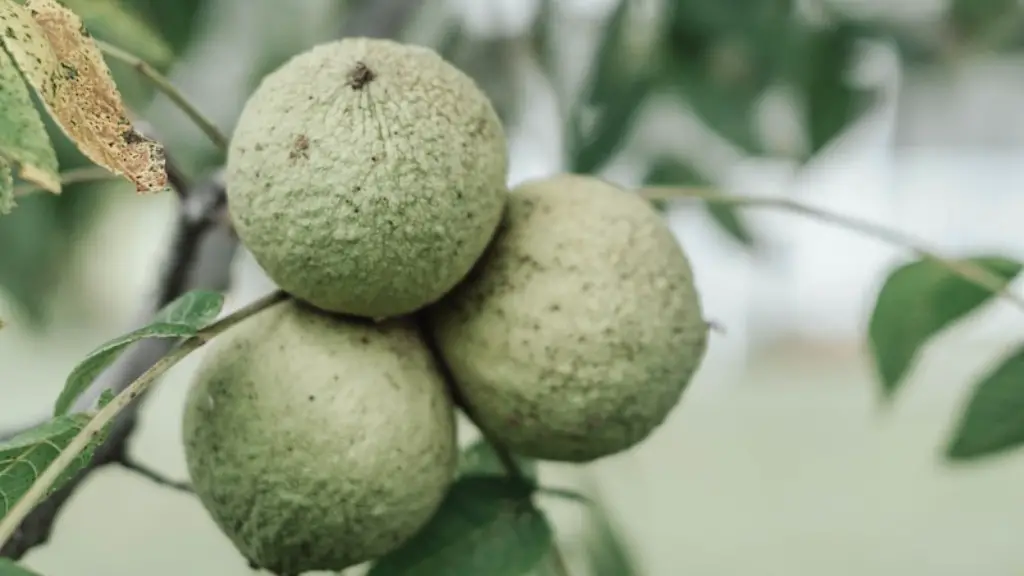Pruning your lemon tree is an important part of caring for your citrus tree. Here are some tips to keep your lemon tree healthy and productive.
First, you need to determine the best time of year to prune. Generally, the ideal time is late winter or early spring when the tree is dormant. This is the time when you can cut back any branches that have become overcrowded or damaged.
Once you have identified the branches that need to be pruned, you can then use a pruning shear to cut them off. Use firm, even pressure as you cut. This will help prevent damage to the trunk or other branches.
As you prune, you should also consider removing any dead or diseased wood from the tree. This will ensure your tree is strong and healthy and that new growth is not stunted.
It’s also important to keep your pruning cuts clean. Use a knife or clippers that are sharp and clean. This will prevent any diseases or insects from entering the tree.
Finally, when you are done with the pruning, apply some mulch to the soil around the tree’s base. This will help keep the soil moist and help protect the roots from drying out.
When to Prune a Lemon Tree
When it comes to pruning a lemon tree, the best time to do so is in the late winter or early spring. This is when the tree is dormant and can fully benefit from the pruning. During this period, you should identify any unwanted, overcrowded, damaged or dead branches that need to be trimmed or removed. It is important to do this as early as possible to ensure your tree is healthy and can take advantage of the upcoming growing season.
It is also essential to cut back any diseased or dead wood as soon as possible. This will help prevent the spread of disease and also give your tree the best chance of growing new healthy branches. So, making sure your pruning is done when the tree is dormant will help your lemon tree have a healthy and productive season.
Tools Required for Pruning a Lemon Tree
When it comes to pruning, most of the tools you will need are fairly straightforward. A good pair of pruning shears is essential for cutting back the unwanted branches. As mentioned, it is important to make sure the shears are sharp and clean to prevent any diseases or pests from entering the tree.
Aside from the shears, you will also need a knife or small pair of clippers for removing any dead or damaged wood. A garden trowel may also come in handy for removing any mulch from around the tree’s base. A ladder may also be necessary if you have a tall tree. Thus, having the right tools for pruning is important to ensure a successful job.
Mulching After Pruning a Lemon Tree
After pruning your tree, it is important to apply some mulch to the base of the tree. This will help keep the soil moist and protect the roots from drying out. It also helps to prevent weeds from growing around the tree, which can compete for the tree’s nutrients. When choosing the mulch, make sure it is organic and free of chemicals to avoid damaging the tree.
Organic materials such as bark, straw, leaves, or compost are all suitable for mulching around a lemon tree. Cedar and cypress shavings are also excellent choices, as they provide moisture, help prevent weed growth, and will not burn the tree’s roots, like some synthetic mulches may. Hence, applying a good mulch to your tree is important to ensure its health and growth.
Fertilizing After Pruning a Lemon Tree
A well-pruned lemon tree should also be fertilized after the pruning is complete. Fertilizing your citrus tree will help it to produce larger and more abundant fruits. However, when fertilizing your lemon tree, it is important to use the correct type of fertilizer and apply it at the right time. The best time to fertilize your lemon tree is after pruning in the spring, and again in the late summer or early fall.
Aside from them, there are a few other fertilizers you can use. Natural fertilizers, such as compost, bat guano, or seaweed extract, are all excellent choices. Artificial fertilizers, such as those made of nitrogen, phosphorus, and potassium, can also be used. However, it is important to make sure that you use the correct ratio of fertilizer. Too much fertilizer can be just as damaging as not enough.
Watering Your Pruned Lemon Tree
In order to get the most out of your pruned lemon tree, it is important to maintain the right water levels. The ideal water level for a citrus tree is to keep the soil damp but not waterlogged. To do this, you should water your tree regularly and deeply. This will encourage the roots to grow and form patches of deeper soil that can absorb more water. You should also periodically check the soil and adjust the amount of water you are giving the tree based on how dry it is.
If a tree is becoming waterlogged, it will be evident due to the soil becoming waterlogged, soggy, and discolored. In this case, it is important to reduce the amount of water you are giving the tree and let the soil dry out slightly. On the flip side, if the soil appears dry and cracked, it is likely that the tree is not being watered enough.
Hence, it is important to maintain proper watering levels in order to keep your pruned lemon tree as healthy as possible. This will ensure it will have the best chance of producing healthy lemons.




